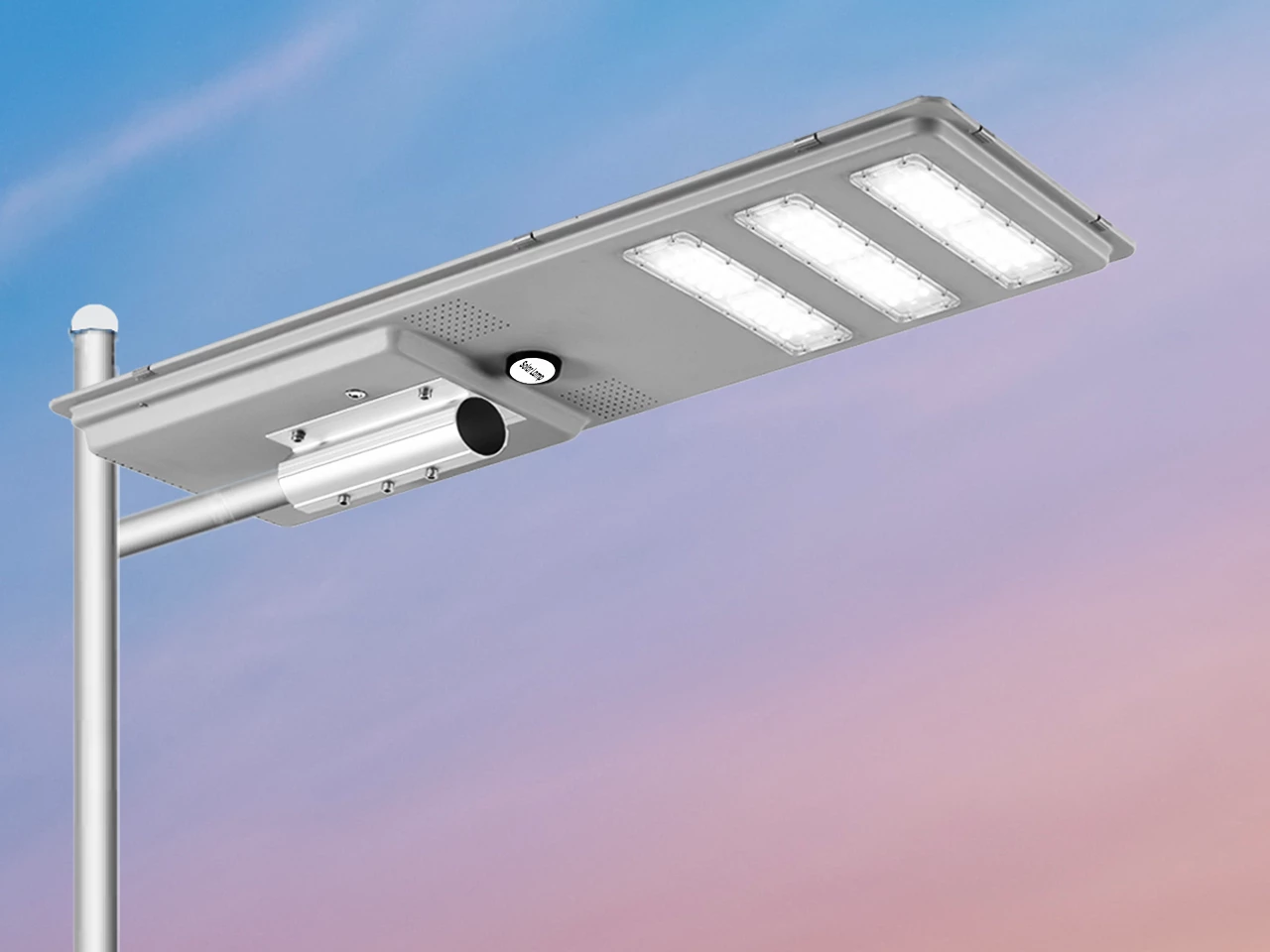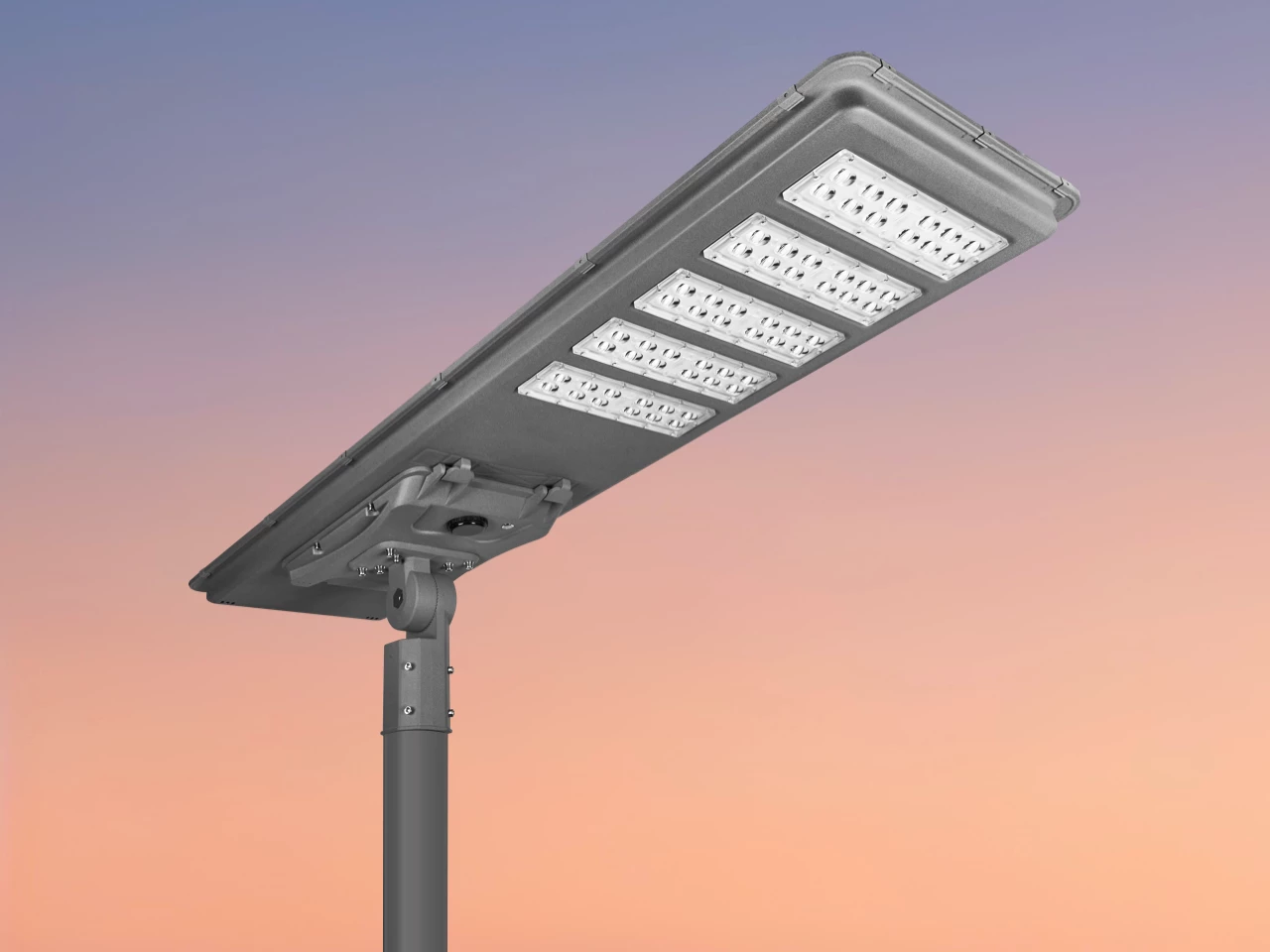How to Calculate Battery Capacity Configuration for Solar Street Lights QUENENG
Learn how to accurately calculate battery capacity for solar street lights. Discover formulas, influencing factors, and best practices to ensure optimal energy storage and lighting performance.
Proper battery configuration is vital for ensuring stable operation of solar street lights. It affects performance, reliability, and energy efficiency. This guide will walk you through how to calculate battery capacity and configure your system properly.

1. Why Is Battery Capacity Important?
- Ensures lighting lasts through the night
- Supports operation during cloudy or rainy days
- Prevents over-discharge and extends battery life
- Optimizes system design and power management
2. Basic Formula
Battery Capacity (Wh) = Lamp Power (W) × Lighting Hours × Backup Days
Convert Wh to Ah by dividing by system voltage:
Battery Capacity (Ah) = Wh ÷ System Voltage (V)
Example:
- 40W LED lamp
- Lighting duration: 10 hours
- Backup Days: 2
- System Voltage: 12V
Battery Wh = 40 × 10 × 2 = 800 Wh
Battery Ah = 800 ÷ 12 = 66.7 Ah
Recommended: 12V 70Ah battery
3. Factors Affecting Battery Capacity
- Lamp wattage and hours used per night
- Battery type (Lithium, LiFePO₄, Lead-acid)
- Climate and sunlight availability
- System voltage and charging efficiency
- Controller type (MPPT recommended for better performance)
4. Recommended Battery Configuration Table
| Lamp Power (W) | Lighting Hours | Backup Days | System Voltage | Recommended Battery Capacity (Ah) |
|---|---|---|---|---|
| 30 | 10 | 2 | 12V | 60 |
| 40 | 10 | 2 | 12V | 70 |
| 60 | 10 | 2 | 12V | 100 |
| 100 | 10 | 2 | 24V | 84 |
5. Expert Tips
- Use MPPT controllers to increase charging efficiency
- Do not oversize batteries to prevent undercharging
- Always consider at least 2 days of autonomy
- Adjust configuration based on actual local climate
-

Frequently Asked Questions (FAQ)
Q1: Can I use any type of battery for solar street lights?
A: No. It’s best to use deep-cycle batteries such as LiFePO₄ or specialized lithium-ion batteries designed for solar energy storage.
Q2: What happens if the battery capacity is too small?
A: The light may not last the entire night, and the battery will cycle deeper, reducing its lifespan.
Q3: Should I oversize the battery for safety?
A: While some buffer is good, oversizing can lead to undercharging issues, especially during winter or cloudy days.
Q4: How do I know my solar panel can recharge the battery in a day?
A: Ensure the solar panel’s daily output (in Wh) exceeds the daily consumption and charging losses. Use MPPT controllers to improve efficiency.

Have more questions about our products or services?
The latest hot news you might like

Discover how solar panels power street lights, exploring the technology behind solar energy conversion, storage systems, and how solar-powered street lights are revolutionizing urban and rural lighting solutions.

Learn how AC Solar Hybrid Street Lights work, their advantages, disadvantages, system behavior in low-sunlight conditions, and why hybrid technology is ideal for regions with unstable sunlight.

Municipalities around the world are increasingly adopting solar-powered streetlights as part of their urban development strategies. Rising energy costs, the need for sustainable infrastructure, and government green initiatives are driving cities to switch from traditional street lighting to advanced LED solar streetlights.
Queneng Lighting provides municipalities with cost-effective, energy-efficient, and durable solar lighting solutions, ensuring safe and sustainable public spaces.

In recent years, the purchase of solar streetlights for municipalities has become a growing trend across the globe. Local governments are under pressure to reduce public expenditure, promote green energy, and create safer communities. Solar streetlights provide a reliable, cost-effective, and sustainable solution that meets these needs. Queneng Lighting, as a leading solar street lighting manufacturer, has supported multiple municipal projects worldwide with customized and energy-efficient solutions.
FAQ
Remote Areas Rural Development
Are solar streetlights scalable for larger rural projects?
Yes, solar streetlights are highly scalable and can be customized to meet the requirements of large-scale rural electrification projects.
Can solar streetlights be relocated if community needs change?
Yes, they are designed to be portable and can be relocated to new sites with minimal adjustments.
Solar Street Light Luan
Are Luan solar street lights weatherproof?
Yes, Luan solar street lights are designed to withstand a variety of weather conditions. They are built with weather-resistant materials that can endure rain, snow, high winds, and extreme temperatures. This ensures they can provide consistent performance year-round, even in harsh climates.
Solar Street Light Luqiu
What makes Luqiu solar street lights innovative compared to traditional solar street lights?
Luqiu solar street lights incorporate advanced technology, such as energy-saving LEDs, smart sensors, and efficient solar panels. These features ensure higher performance, longer battery life, and better adaptability to varying weather conditions, setting them apart from traditional models.
Batteries and the environment
What is the main manifestation of the hazards of used batteries?
Commercial and Industrial Parks
How are the lights installed in industrial parks?
Our solar lights are designed for easy installation without complex wiring, making deployment quick and cost-effective.

Queneng's Lufa high-efficiency solar LED street lights illuminate urban and commercial spaces brilliantly. These commercial solar LED street lights offer superior energy savings and reliable performance, making them an ideal sustainable lighting solution.
If you would like more information about Queneng solar lighting solutions, please send us a message by filling out the form below. Our professional team will get back to you within 24 hours!
Rest assured that your privacy is important to us, and all information provided will be handled with the utmost confidentiality.
Schedule a Meeting

Book a date and time that is convenient for you and conduct the session in advance.
Have more questions about our products or services?



















